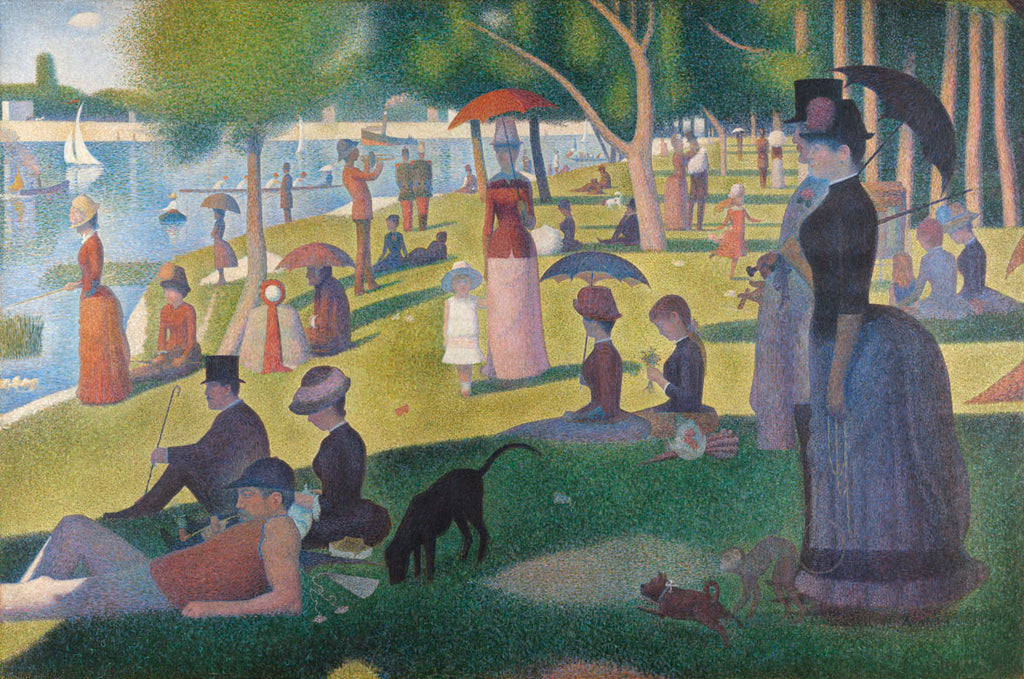George Seurat’s masterpiece A Sunday Afternoon on the Island of La Grande Jatte is many things. It is a leading example of the pointillist technique, Seurat being the artist best known for using this style of painting which emerged during the Post-Impressionist period. This work is executed on a very large scale canvas (7x10 feet), and is one of the most famous pieces in the collection of the Art Institute of Chicago.
Painted in 1884, Sunday Afternoon is one of Seurat’s most famous works, illustrating Parisians enjoying a beautiful day at a park on the banks of the River Seine. At that time, Sunday was the day for Parisians to escape the city heat so they flocked to the parks on the river where they could find shade and cool breezes. Seurat spent much time and focus meticulously composing the landscape of the park and utilizing a form of painting called “Divisionism” (now known as pointillism) whereby he contrasted miniature dots or small brushstrokes of colors that were perceived as one hue to the human eye when unified optically.
There have been many different interpretations of the subject matter, beyond the obvious scene of people enjoying a lovely spring day at the park. When one looks closer, many curious characters can be found such as a lady holding a monkey on a leash, and another fishing. There is a young girl in the center of the painting who is staring directly at the viewer, who seems to be questioning the audience. The shadow that is cast over a large part of the scene adds a layer of suspicion and mystery, creating a somewhat dark undercurrent to the obvious scene. Perhaps he was referencing the other activity for which the area was known, as a place to procure prostitutes among the bourgeoisie. It has also been noted by Marxist philosopher Ernst Bloch that the rigid static nature of the figures was a statement about French society of that time.
The painting has been included in many pop culture references, making it an easily recognizable work among those not well versed in art history. It was referenced on the cover of the May 1976 issue of Playboy, and was the subject for the 1984 Broadway musical Sunday in the Park with George. It was also featured in a famous scene from the 1986 film Ferris Bueller’s Day Off and parodied on animated shows The Simpsons and Family Guy. Shop George Seurat.


